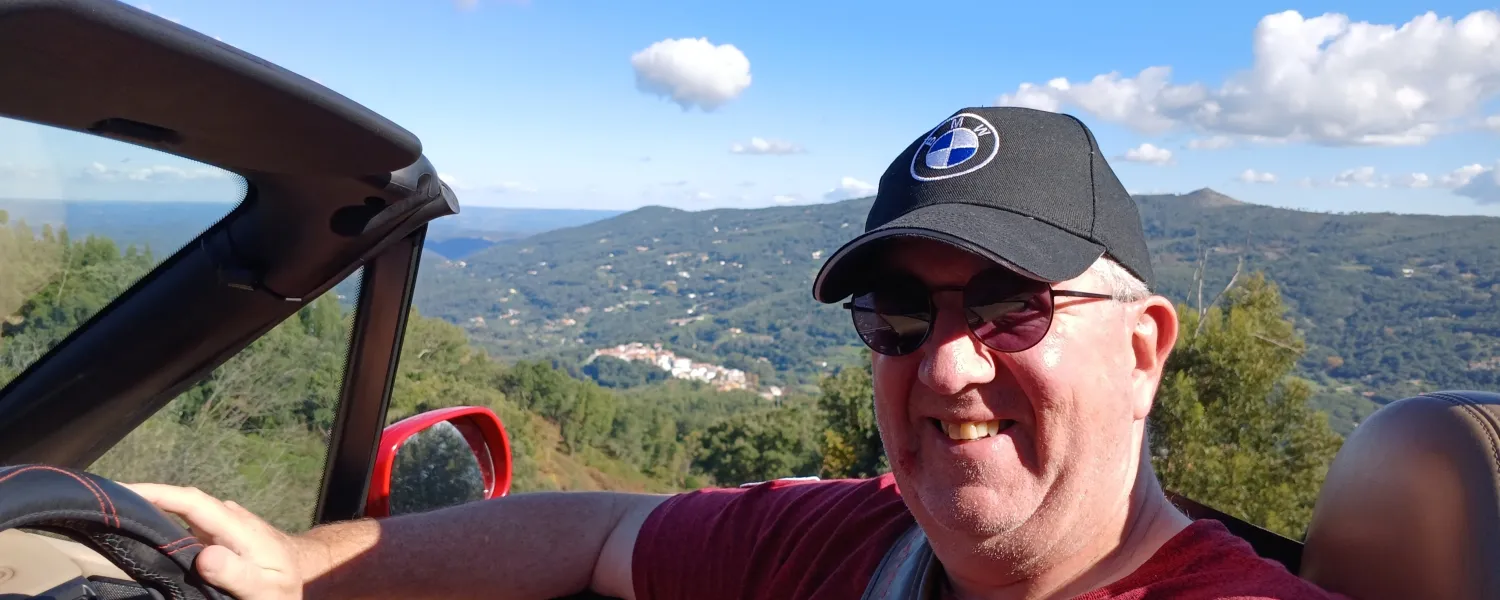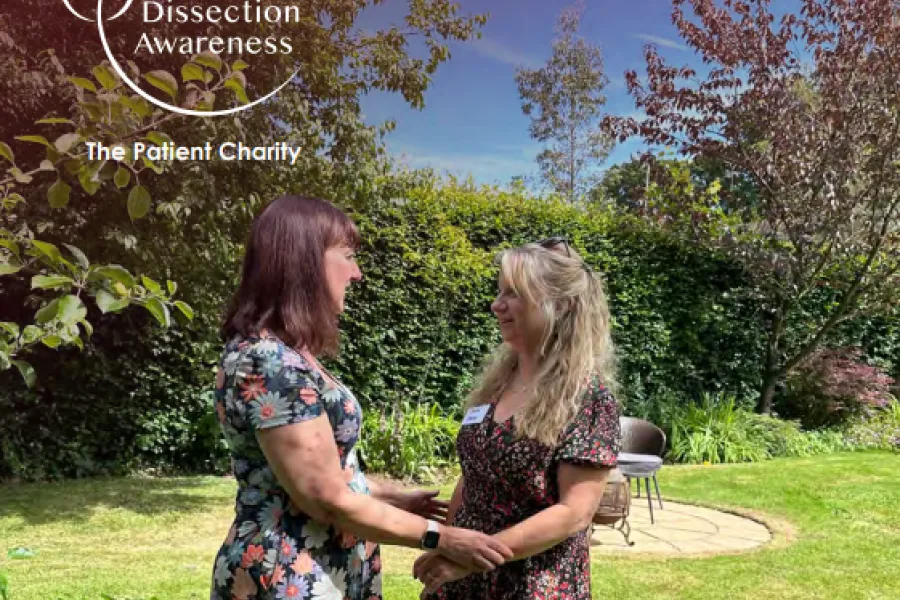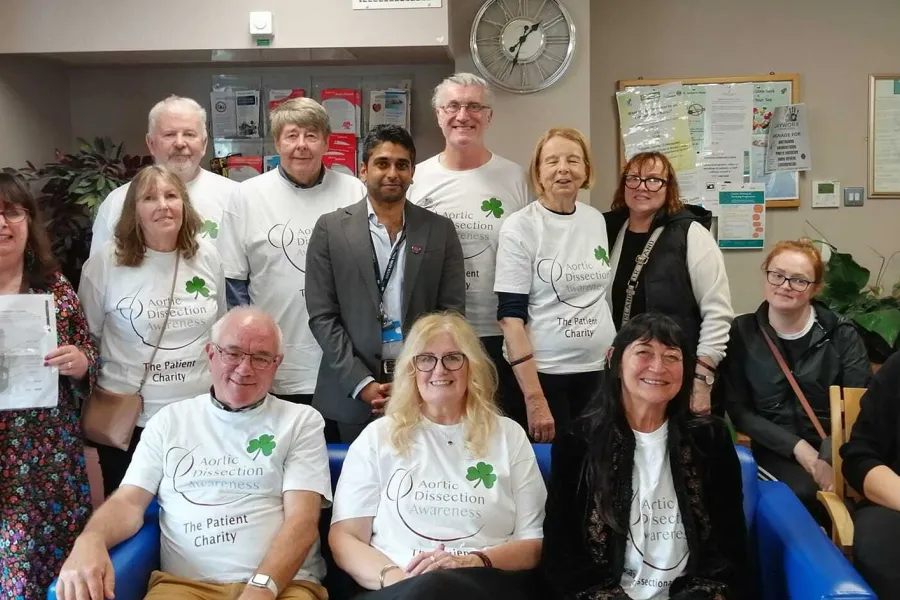
DVLA agrees new guidance on driving after Aortic Dissection with national patient charity
As awareness of Aortic Dissection increases, national patient charity Aortic Dissection Awareness UK & Ireland engaged with DVLA to clarify its guidance on driving after Aortic Dissection. Agreement has now been reached.
Prof. Robert Sneyd, a retired senior doctor and Type A Aortic Dissection survivor, led the charity's engagement with DVLA and reports as follows:

On Tuesday, 15th December 2024, I met with:
- The Chair of the DVLA’s Honorary Cardiovascular Panel, (an interventional cardiologist).
- The Senior DVLA Doctor.
- The Deputy Senior DVLA Doctor
After a welcome from DVLA, I thanked them for the meeting and emphasised that the Charity wish to represent the patient experience and in particular the stresses and anxieties that flow from licensing issues and interacting with DVLA. I explained that we recognise DVLA’s legal duty to implement relevant legislation and regulations. Further, it is DVLA’s role to set appropriate standards and practices. As patients, we can usefully give feedback and advice, but we do not get to set the standards.
This meeting was focused on licensing for Group 1 (car and motorcycle) rather than Group 2 (bus and lorry). The threshold for licensing is based on an event rate (i.e. the likelihood of something bad happening in the next 12 months) of 20% for Group 1 and 2% for Group 2 respectively. Therefore, the process for Group 2 licences is appropriately more rigorous and the bar is set higher. I had the opportunity to present a patient view of the DVLA online presence:
A-Z list of medical conditions: The relevant DVLA list is out of date and does not synchronise well with the publication Assessing Fitness to Drive: a Guide for Medical Professionals. DVLA are aware of this issue and are working on it. Briefly, the A-Z list is owned and administered by Government Digital Services (GDS) whereas the Guide is produced by DVLA. Patients are anxious about whether they need to notify DVLA of their surgery and whether they have to stop driving. The current Guide contains several inconsistencies. After emergency surgery for Aortic Dissection without complications... Marfan patients may resume driving (p71), Aortic Aneurysm patients may not (p68), spontaneous dissection may not (p70). In contrast, patients undergoing Aortic Valve Replacement need not notify DVLA.
In discussion, we clarified that the Guide is constantly under review. Because it is reviewed in sections, a changing standard may be (temporarily) inconsistently represented. This appears to be the case with regard to Aortic Dissection. DVLA clarified that going forward, all types of Aortic Dissection (i.e. regardless of cause and including Marfan) must be notified to DVLA. Notification is required, whether or not there is any surgery, and whether or not there are any complications. All patients must stop driving after surgery and may not resume until re-licensed/licensed by DVLA. The same applies to Type B Aortic Dissection: stop driving, notify DVLA and then no resumption until
re-licensed/licensed.
Clearly, this represents a significant hardening of policy.
Dealing with history: Lots of people have had successful surgery, often years ago, and
subsequently resumed driving – presumably with medical approval of some sort, or maybe not. Also, what about Type B dissection patients on stable medical treatment. Does DVLA want to know about them all?
The answer is that drivers have a legal obligation to declare their medical condition to DVLA and there is no historic exemption. All patients who have experienced Aortic Dissection whether type A or type B, with or without surgery, with or without complications must notify DVLA using DVLA form H1. This requirement applies to everybody, regardless of how long ago the dissection happened.
However, whilst awaiting the outcome of notification, you may continue to drive unless you have been told not to drive by a doctor or healthcare professional.
DVLA appreciate that there may be a significant one-off load of notifications precipitated by this clarification. Current turnaround at DVLA is an average of 44 days. DVLA anticipate that the overwhelming majority of such “catching-up” notifications will result in confirmation that driving entitlement may be retained.
The bottom line for Aortic Dissection patients is, even if you dissected years ago and were told you were OK to drive, you now need to notify DVLA using Form H1.


